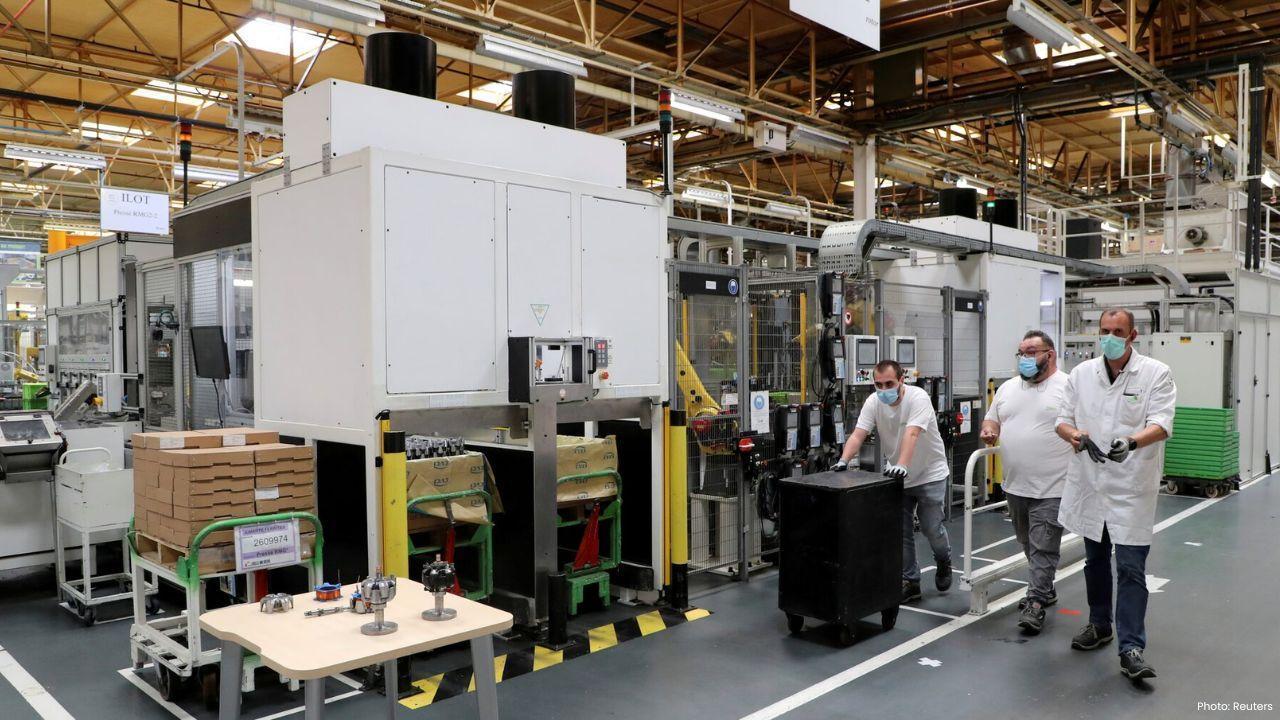
Post by : Armust Desk
Manufacturing industries are always looking for ways to become more efficient, save energy, and reduce costs. One technology that is transforming manufacturing operations is the Variable Frequency Drive, or VFD. A VFD is an electrical device that controls the speed and torque of an electric motor by changing the frequency and voltage supplied to it. This simple adjustment allows motors to run only as fast or slow as needed, instead of running at full speed all the time, which saves energy and reduces wear and tear on equipment.
VFDs are highly versatile and can be used in many industries, including manufacturing plants, HVAC systems, water treatment plants, and more. They allow precise control over machinery, improving both productivity and product quality. By controlling motor speed, VFDs help machines operate more smoothly, efficiently, and safely.
How VFDs Work
A Variable Frequency Drive works by first converting the incoming AC (alternating current) power to DC (direct current) and then converting it back to AC at a controlled frequency. This process allows the VFD to regulate motor speed and torque with high precision. The main parts of a VFD include a rectifier, a DC bus, and an inverter.
The rectifier converts AC power to DC.
The DC bus stores the DC power temporarily.
The inverter converts the DC back to AC at the required frequency and voltage.
This system ensures that motors operate exactly as needed, reducing unnecessary energy usage and mechanical stress.
Benefits of VFDs in Manufacturing
Energy Savings
One of the most important benefits of VFDs is energy savings. Many motors in factories run continuously at full speed, even when the full power is not required. This wastes a lot of electricity. A VFD allows the motor to run only at the speed needed for a particular task. For example, in a pump system, the VFD can slow the motor when less liquid is required and speed it up when more is needed. This precise control can reduce energy usage by up to 70% in some cases, making operations much more cost-effective.
Improved Process Control
VFDs allow manufacturers to have precise control over motor speed and torque. This means machines can operate more accurately, producing higher-quality products. For example, in conveyor systems, VFDs ensure smooth starts and stops, preventing sudden jerks that could damage goods. Similarly, in production lines, they help maintain consistent speed, reducing errors and waste. Improved control also leads to faster production times and increased overall efficiency.
Extended Equipment Lifespan
Frequent starts and stops or running a motor at full speed continuously can create mechanical stress, causing motors and machines to wear out faster. VFDs reduce this stress by allowing soft starts and controlled operation. This means that equipment experiences less strain and lasts longer, which reduces replacement costs and minimizes production downtime caused by breakdowns.
Reduced Maintenance Costs
By reducing mechanical stress and preventing sudden starts and stops, VFDs help lower maintenance requirements. Machines experience less vibration and wear, which reduces the frequency of repairs. Predictable operation schedules also allow maintenance teams to plan and perform preventive maintenance, further lowering costs and ensuring smoother operations.
Enhanced Safety
VFDs improve workplace safety by providing soft starts and stops for machinery. This reduces the risk of accidents caused by sudden machine movements. Additionally, VFDs help maintain consistent operating conditions, preventing overheating, electrical faults, and other issues that could lead to equipment failures or unsafe situations for workers.
Applications of VFDs in Manufacturing
VFDs are not limited to one type of machine. They can be applied to many types of motors and systems in manufacturing, including:
Pumps: VFDs adjust motor speed according to flow demand, saving energy and improving system performance.
Fans: VFDs control airflow in ventilation systems, optimizing energy use and maintaining desired environmental conditions.
Conveyors: VFDs provide smooth acceleration and deceleration in conveyor belts, reducing mechanical wear and improving process control.
HVAC Systems: VFDs adjust motor speed in heating, ventilation, and air conditioning systems, improving energy efficiency while keeping buildings comfortable.
Compressors: VFDs match motor speed with air demand, reducing energy consumption and extending equipment lifespan.
Challenges and Considerations
Although VFDs offer many benefits, there are a few factors that companies need to consider:
Initial Cost: VFDs can be more expensive to purchase and install than traditional motor controllers. However, the energy savings, reduced maintenance costs, and extended equipment lifespan usually outweigh the initial investment over time.
Heat Generation: VFDs can generate heat during operation. Proper cooling measures are necessary to prevent overheating and maintain performance.
Harmonic Distortion: VFDs may create electrical harmonics, which can affect other equipment on the same electrical system. Careful installation, filtering, and monitoring can minimize this issue.
Variable Frequency Drives are changing the way manufacturing industries operate. By providing precise control over motor speed and torque, VFDs help companies save energy, reduce maintenance costs, extend equipment life, and improve overall productivity. They are particularly useful in applications like pumps, fans, conveyors, HVAC systems, and compressors, where motor speed adjustments can make a big difference.
Variable Frequency Drive, VFD, manufacturing efficiency, energy savings










Advances in Aerospace Technology and Commercial Aviation Recovery
Insights into breakthrough aerospace technologies and commercial aviation’s recovery amid 2025 chall

Defense Modernization and Strategic Spending Trends
Explore key trends in global defense modernization and strategic military spending shaping 2025 secu

Tens of Thousands Protest in Serbia on Anniversary of Deadly Roof Collapse
Tens of thousands in Novi Sad mark a year since a deadly station roof collapse that killed 16, prote

Canada PM Carney Apologizes to Trump Over Controversial Reagan Anti-Tariff Ad
Canadian PM Mark Carney apologized to President Trump over an Ontario anti-tariff ad quoting Reagan,

The ad that stirred a hornets nest, and made Canadian PM Carney say sorry to Trump
Canadian PM Mark Carney apologizes to US President Trump after a tariff-related ad causes diplomatic

Bengaluru-Mumbai Superfast Train Approved After 30-Year Wait
Railways approves new superfast train connecting Bengaluru and Mumbai, ending a 30-year demand, easi